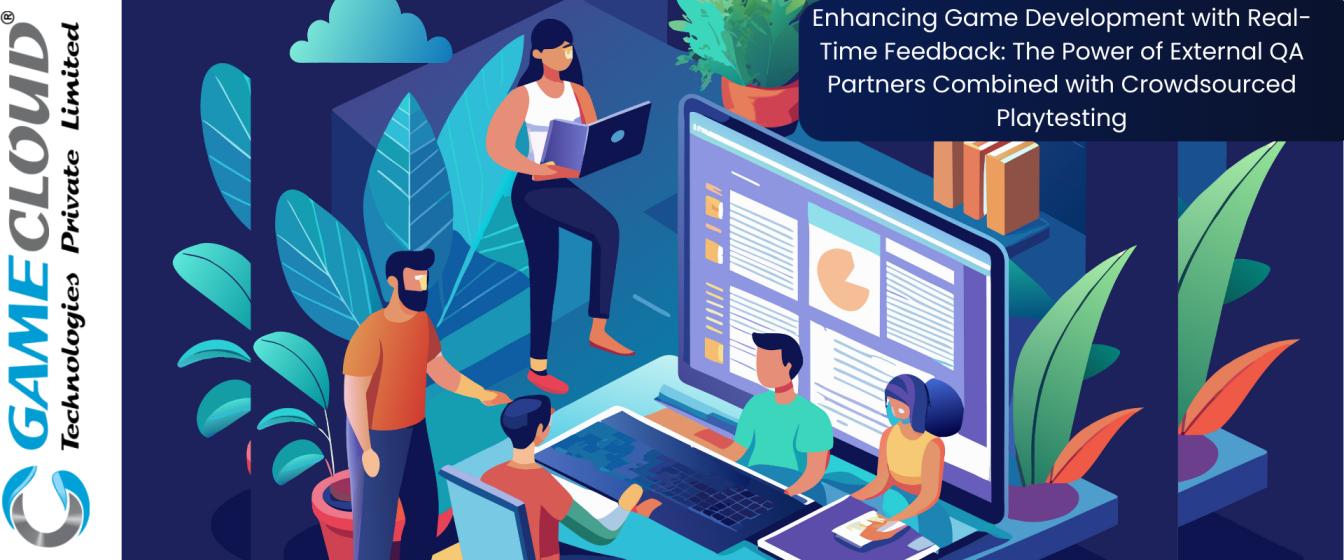
In the fast-paced world of game development, staying ahead of the curve is crucial. One groundbreaking approach that’s transforming the industry is the fusion of external Quality Assurance (QA) partners with crowdsourced playtesting. This powerful combination offers real-time feedback that can significantly enhance the development process, leading to more polished, player-centric games.
The Synergy of External QA and Crowdsourced Playtesting
Integrating external QA partners with crowdsourced playtesting enables game developers to capture diverse perspectives and insights that traditional QA methods often miss. External QA professionals excel at identifying technical issues and maintaining quality standards, while crowdsourced playtesting provides authentic feedback on gameplay experience, user interface, and enjoyment from a diverse pool of players, offering a more comprehensive understanding of the game’s strengths and weaknesses.
Real-Time Feedback: A Game-Changer
The true power of this combined approach lies in its ability to provide real-time feedback. Advanced telemetry systems and analytics tools allow developers to collect and analyze data from both QA partners and crowdsourced playtesters simultaneously.
This real-time insight enables developers to:
- Identify and address issues promptly, reducing development cycles
- Make data-driven decisions on game mechanics and features
- Optimize player engagement and retention strategies
- Validate design choices with actual player behavior
Implementing the Hybrid Approach
To successfully implement this hybrid QA model, developers should consider the following steps:
- Select the right external QA partner: Look for firms with experience in your game genre and target platforms.
- Build a diverse playtester community: Recruit players who represent your target demographic and include both casual and hardcore gamers.
- Implement robust telemetry systems: Invest in tools that can capture and analyze gameplay data in real-time.
- Establish clear communication channels: Ensure seamless information flow between internal teams, external QA, and playtesters.
- Develop a feedback loop: Create processes for quickly acting on insights gained from both QA and playtesting.
GamerThrong and GameCloud’s Role In the Future
GamerThrong, a sub-brand of GameCloud Technologies Pvt Ltd, uses crowdsourcing and real-time feedback to transform game development. By engaging a global network of gamers, tech enthusiasts, and VR aficionados, we provide invaluable feedback to game developers, refining game mechanics, fixing bugs, and enhancing overall user experience. This approach democratizes game development, giving players a sense of ownership and investment in the final product, leading to higher engagement levels and longer shelf lives. GameCloud Technologies, our parent company, supports this model by offering advanced tools for bug tracking and project management, ensuring that the dedicated team of testers fulfill their obligations and provide comprehensive reports on identified bugs and defects. This integration of crowdsourced playtesting and real-time feedback along with professional bug reporting by our in-house teams accelerates the development process, allowing for quicker iterations and more user-centric games, ultimately enhancing the overall quality and success of games developed through this collaborative model.
The Future of Game Development
As gaming continues to evolve, the integration of external QA partners along with their professional QA team and crowdsourced playtesting with end-users of all kinds will likely become the industry standard. This approach not only enhances game quality but also fosters a stronger connection between developers and their player base.
By embracing this innovative QA model, game developers can create more engaging, polished, and player-centric experiences. In an industry where player satisfaction is paramount, real-time feedback through this hybrid approach could be the key to staying ahead in the competitive world of game development.
